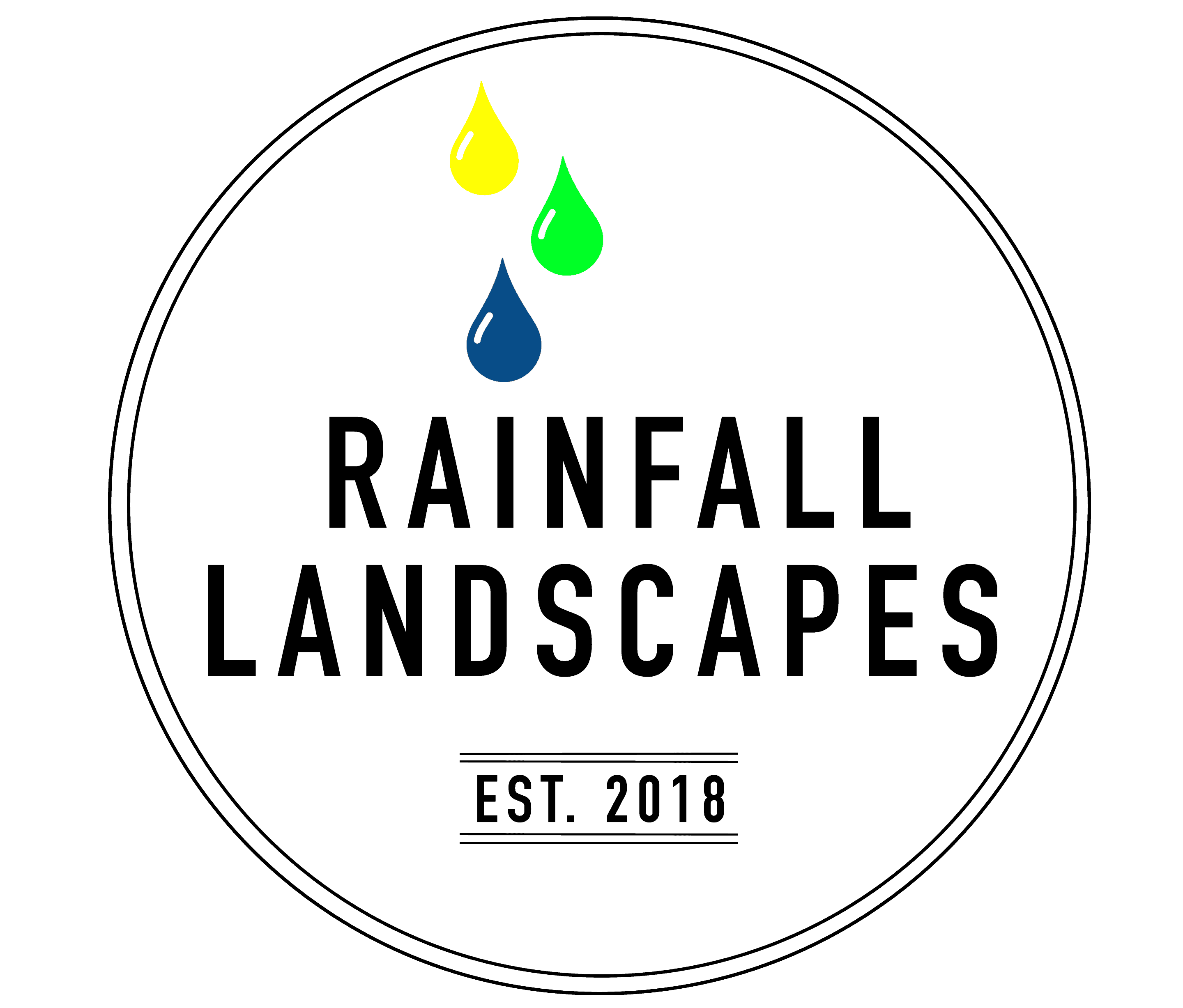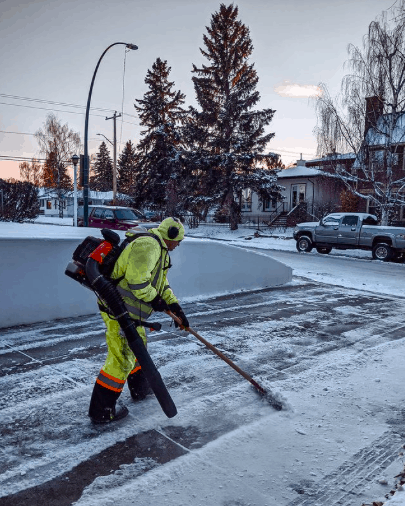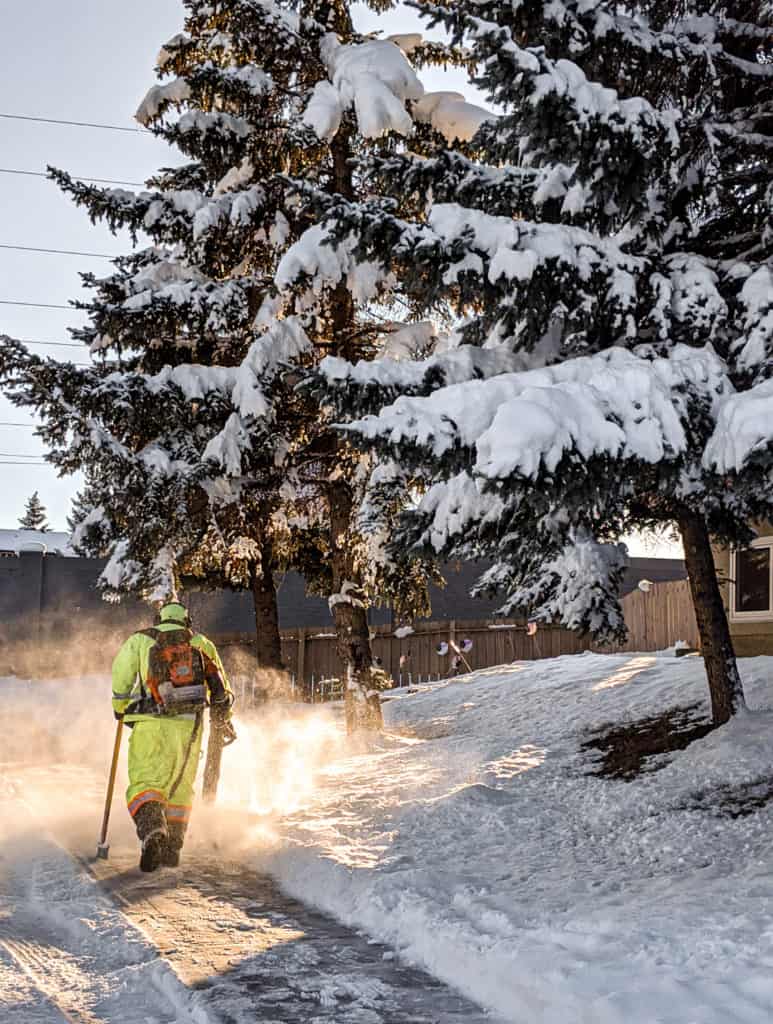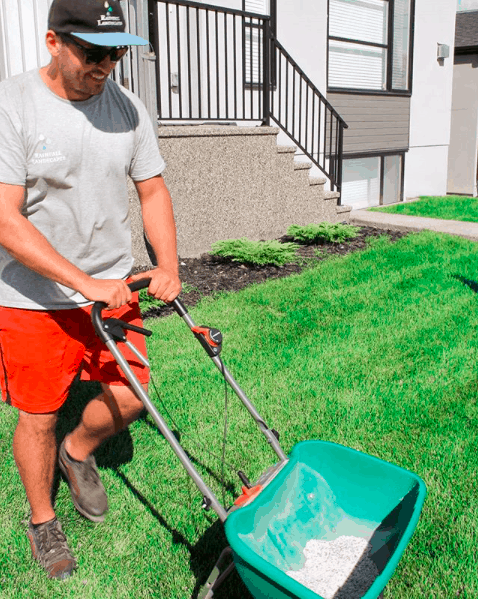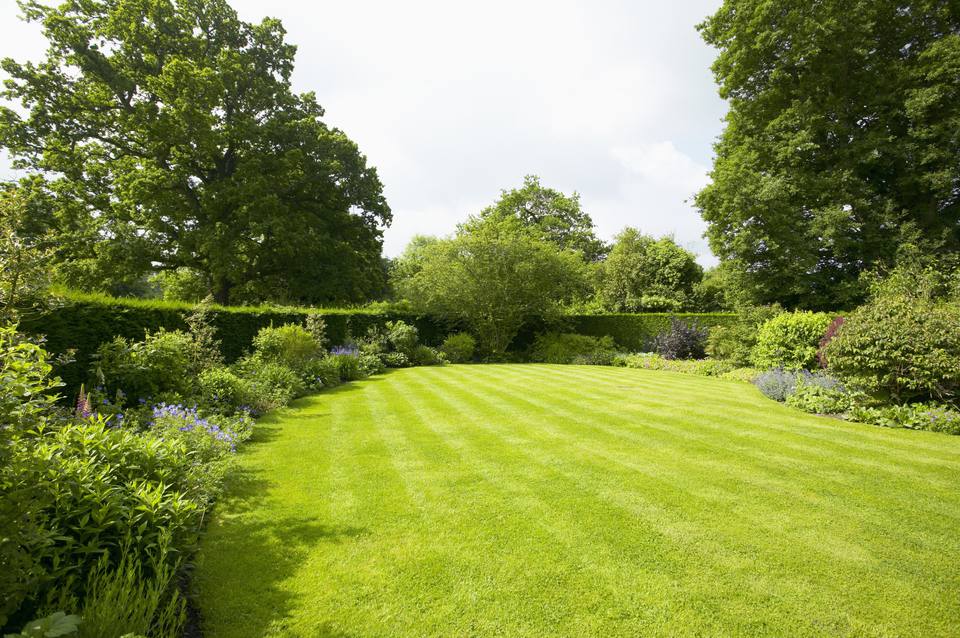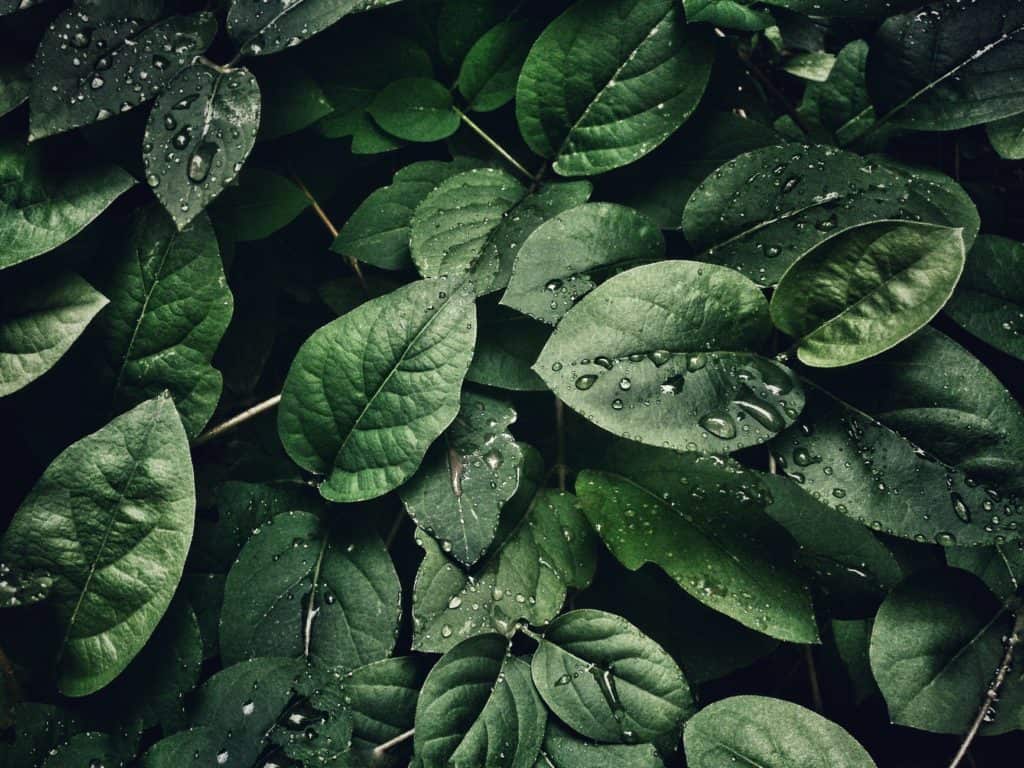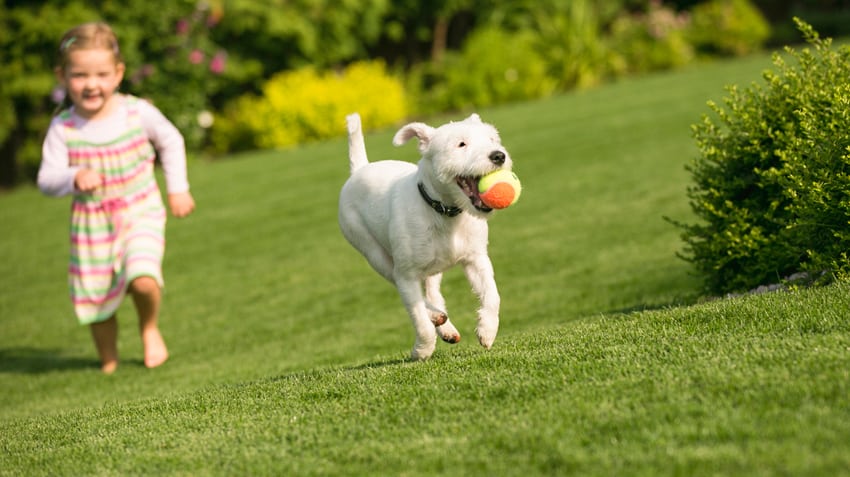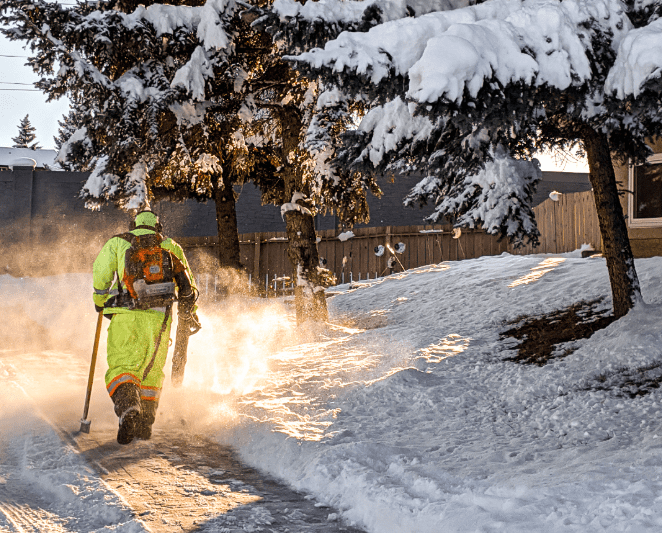RAINFALL LANDSCAPES BLOG
7 Tips for End of Winter and Early Spring Lawn Care in Calgary
Share this article
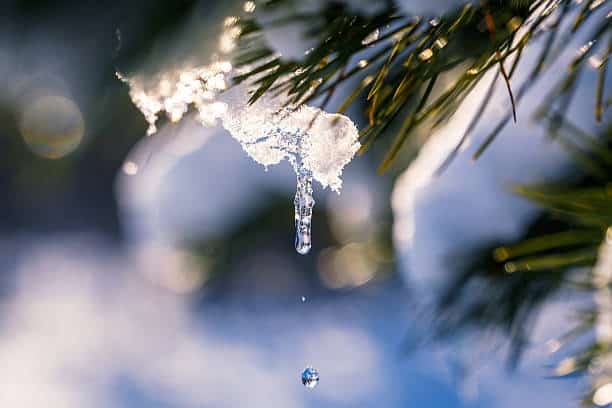
1. Keep the Yard Clear Throughout the Calgary Winter.
As you’re wrapping up yardwork in the Calgary fall, be sure not to leave anything behind. Rake away all the leaves and put away sprinklers, hoses, garden furniture, yard toys and decorations. If something is left on the surface, the grass will get matted down during the winter months. With the added moisture of rain and snow, this can also make the perfect environment for pests and mold to sneak in and damage the turf or kill it.
2. Protect the Lawn During the Last Weeks of Calgary Winter.
Don’t give into late-winter fatigue. It’s important to protect your grass from regular traffic and snow piles through the last stretch of the season. Keep your driveway, sidewalks and paths clear of snow so that people have a safe place to walk. You should avoid shoveling snow onto the lawn or making snow piles that get in the way, forcing people to trample down the grass. At the end of winter, break up piles of ice and spread the snow around to help it melt away quicker.
As winter shifts to spring in Calgary, new grass growth can easily be damaged by the pressure from feet or piled snow. Plus, piles of snow take longer to melt and can block the grass from getting those first warm rays of sun in the early spring. This results in the grass taking longer to turn green and start growing.
3. Groom the Grass at the Beginning of the Season.
Don’t be surprised if your grass looks sad and worn down when the snow clears. The winter is a harsh challenge for any lawn. In the early spring, lightly rake the lawn to help perk up the turf ahead of the growing season. As soon as the soil dries out a bit, carefully clear away leaves and dead grass using a regular leaf rake. This will break up any matted areas and improve airflow the surface of the blades.
Wait to begin raking until the ground has dried out and firmed up in the spring. If the soil is muddy, you risk damaging the grass by walking and working on it. Also remember to be gentle. The old grass and new growth are fragile, plus moist soil makes it easier to pull the blades out of the ground.
4. Help the Grass Get Some Fresh Air.
It’s important to Aerate and Seed the lawn in peak growing season so that the grass can bounce back quickly. An aerator tool bores small, shallow holes into the ground. The purpose is to break up compact soil, provide adequate space for grass to grow, and allow the roots access to fresh air and nutrients more efficiently.
By aerating in the early spring, you will give the turf more space to flourish and prevent the grass from getting overly compacted during the spring and summer. Aerating your yard will also help it recover after an unusual winter season, like this year, when temperatures fluctuate and the ground freezes and thaws multiple times.
5. Encourage New Growth in the Spring with Over-seeding.
Many homeowners don’t know that grass likes company. Cool-season grasses look best when it is aerated in the Fall. The next step is to spread grass seed over the existing turf to counteract the natural thinning process through the winter. It will also introduce fresh growth to keep it looking lush all year.
Aerating and Over-Seeding in the spring is OK but Fall is the ideal time, so you don’t have to compete with weather, weeds, and crabgrass problems. If you do seed in the spring, you need to do have to monitor it more frequently and water it when needed to speed up growth before any heat waves. The 1st week of April is an ideal time.
6. Give it Nutrients to Grow in the Spring.
Plants go dormant in Calgary’s winter climate, so fertilizer isn’t necessary during the coldest months. This is true even for cool season grasses. But you can help your lawn recover from the harsh weather with fertilizer treatment first thing in the spring. After aerating, as soon as the snow melts and outside temperatures reach an average of 55°, give your grass a healthy snack to energize growth for the spring. Lawn fertilizer is a special mix of nutrients that the roots absorb. Then, the plant stores or uses it as food over time. If you use a spreader, fertilizing can be a quick and easy way to care for the lawn.
7. Don’t Wait Too Long to Mow the Lawn.
Finally, it may seem early, but in most parts of Calgary, grass will be ready for its first trim sometime in April. We recommend that grass be mowed once it reaches about 3 inches in height. By mowing the new green blades when they get to this point, you will prevent the grass from getting overgrown and stimulate continual growth.
